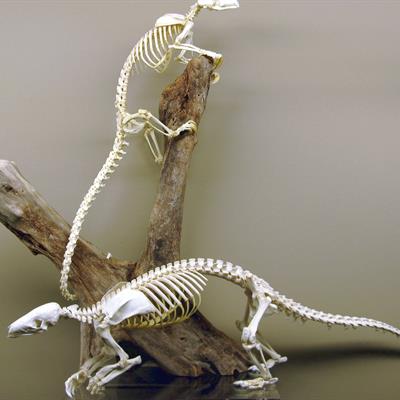Please be aware when registering, all times are in the Eastern Time Zone. Even for free events, you will need to click the "Proceed to Checkout" button and "Submit Order"
to complete your registration. If you do not receive an automated confirmation email, or if you have any questions about registration, please email
onlineseminars@saa.org.

Registration Closed!
Identifying and Interpreting Animal Bones
When: November 04, 2019 2:00-4:00 PM ET
Duration: 2 hours
Certification: RPA-certified
Pricing
Individual Registration: $99 for SAA members; $149 for non-members
Group Registration: $139 for SAA members; $189 for non-members
Dr. April M. Beisaw has worked as an independent faunal analyst since completing her MA thesis in 1998. She is the author of Identifying and Interpreting Animal Bones: A Manual, published by Texas A&M University Press in 2013.
Valerie Hall is a graduate student at the University of Maryland. She is currently working as an independent faunal analyst with collections from Historic St. Mary’s City, MD; Monticello in Charlottesville, VA; and Charleston, NC. Her dissertation research explores environmental change related to the importation of domestic livestock during the colonial period.
Valerie Hall is a graduate student at the University of Maryland. She is currently working as an independent faunal analyst with collections from Historic St. Mary’s City, MD; Monticello in Charlottesville, VA; and Charleston, NC. Her dissertation research explores environmental change related to the importation of domestic livestock during the colonial period.
This introductory seminar will cover both techniques for identifying bone fragments and some basic interpretive analyses that can be done using only a spreadsheet application. Participants will be provided with a series of example bone images and faunal data so we can work through the process together. Emphasis will be on mammal and bird bone identification but fish, reptile, and amphibian may be included in the shared dataset. Related data such as habitat preferences of identified species will be used to develop an interpretation of the example collection.
- Gain experience identifying fragmentary faunal remains to taxonomic class, if not genus or species.
- Manipulate basic faunal data to calculate minimum numbers of individuals, numbers of
identified specimens, and assess spatial patterning across a site. - Use inferential data such as habitat preferences of identified animals to interpret the collection.


